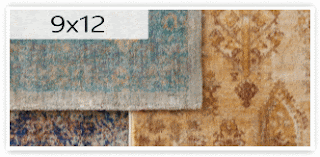TeaWash. Is it an all encompassing skin cure? No. AntiqueWash. Is it an inside decorator's divider treatment? No. LustreWash. Is it a hair conditioner? No.
TeaWash, AntiqueWash, and LustreWash are altogether licensed floor covering completing procedures having a place with the producers of Karastan mats. Also, they are among the inventive procedures which have, from their first appearance, set Karastan floor coverings separated in the realm of covering.
The first Karastan floor covering moved off, on April 8, 1928, a loom particularly intended for Marshall Field and Company, proprietor of the respected Chicago retail chain, in a North Carolina town with the far-fetched name of Leaksville. Marshall Field had seen the insight - read negotiating prudence - of having the option to create superb generations of Oriental floor coverings in economically gainful numbers, and had spent critical assets in building up a power loom which could do as such.
The Karastan Axminster loom, a refinement on the hand-worked Axminster loom structured in 1876, was the primary power loom fit for creating Karastan floor coverings in which the woven filaments were noticeable through the cotton backing, giving them the appearance, and "feel", of hand-tufted Persian and Oriental mats.
The carpet generation process, truth be told, was such a takeoff from built up procedures that early Karastan mats were marked, by the inside architects of the day, "Puzzle Rugs", and Marshall Field, never one to neglect a PR opportunity, exploited the buzz by having an enormous mat woven in Karastan Kirman design #791 and offered, not as a showcase thing, however as a real floor covering at the 1933 Chicago World's Fair Karastan mats display.
By the Fair's end, the Karastan floor covering had been trod upon by an expected five million sets of feet, and deformed with a boundless number of spills and stains. Is it accurate to say that it was bound for the rubbish load? No way on earth! Half of it was cleaned, and the other half left immaculate; it stays, right up 'til the present time, in plain view as a demonstration of the stunning solidness of Karastan floor coverings.
Containing New Zealand fleece, known for its uncommon whiteness, Karastan floor coverings have filaments which are neither too little to even think about being breathed in by asthma sufferers, nor appropriate natural surroundings for residue vermin and other allergen makers. Fleece has additionally been appeared to ingest air poisons more successfully than engineered cover strands.
Karastan floor coverings get their one of a kind hues and patinas from different completing procedures. Karastan TeaWash, presented in 1997, includes a warm yellowish cast, and matured appearance, to the floor covering's hues. It will likewise impersonate the "abrash"- - the black out even shading changes- - of floor coverings hued with vegetable colors, which happen in light of the fact that vegetable-colored yarns only here and there result in precise shading matches.
Karastan AntiqueWash utilizes synthetic substances to mitigate the brilliance of a carpet's hues, again giving them a quieted and matured look.
At last, Karastan floor coverings have, from their presentation, got a "LustreWash," both to orchestrate their hues, and to give them the astonishing delicate quality which is regularly connected distinctly with a lot more established hand-woven carpets.


No comments:
Post a Comment